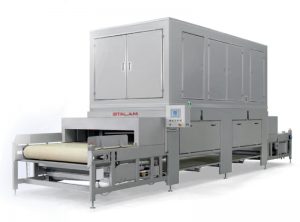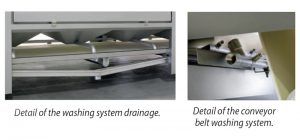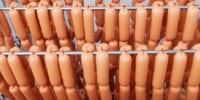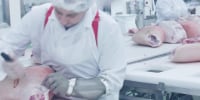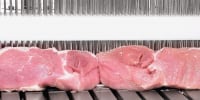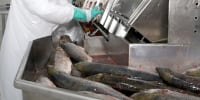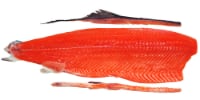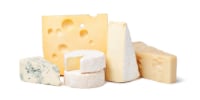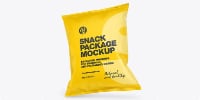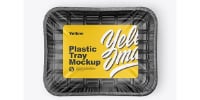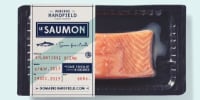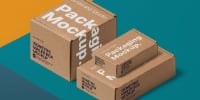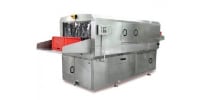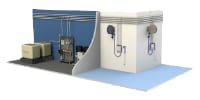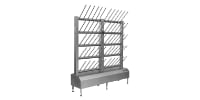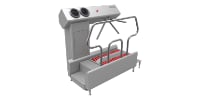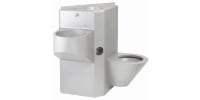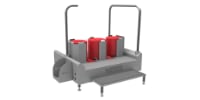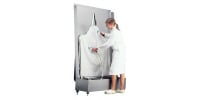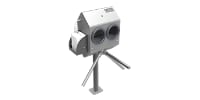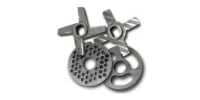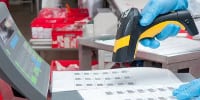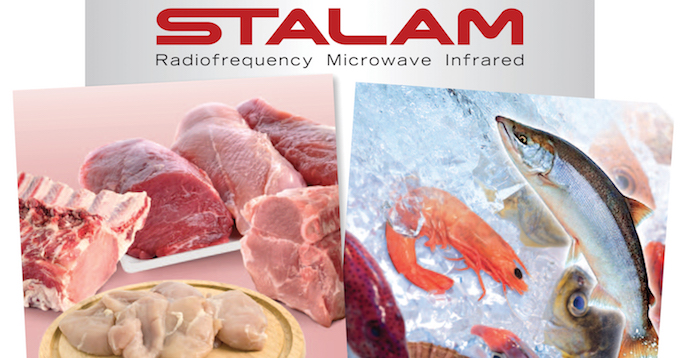
Stalam “RF” Meat & Fish Defrosting
Traditional defrosting
The traditional defrosting methods introduce a number of difficulties directly related to the heat transfer mechanisms: slow process (hours, sometimes days); bacteria growth in the product; high drip loss (economic loss); deterioration of the product surface; batch processing (high handling costs, risk of breakage, bruising and other damages to the product due to such handling).
“RF” Defrosting
Product surface deterioration and other drawbacks attributed to conventional defrosting methods can be avoided, thanks to the ability of RF to rapidly generate heat volumetrically within the product. The heating process is uniform and controlled, resulting in a significant reduction of drip losses. It also offers great flexibility in the production schedules and is the ideal solution for many tempering, softening and thawing processes.

The product is placed on the machine’s conveyor belt and is transferred through the RF unit (tunnel) passing between upper and lower metallic plates (electrodes). When the RF generator applies high frequency alternating voltage between these plates, the dipolar water molecules of the frozen product will vibrate and rotate in the attempt to align themselves according to the fast changing opposite plates polarities. This phenomenon causes intermolecular friction, which will in turn generate heat rapidly and uniformly within the whole product mass regardless of its size, weight, shape and thermal conductivity.
The amount of heat generated inside the product and the defrosting time are accurately controlled through the voltage applied on the electrode plates and the speed of the conveyor belt.
Some types of meat and seafood that can be successfully defrosted with RF technology
“RF” Main Advantages
defrosting is achieved in minutes rather than hours/days, even for large product blocks and, if necessary, directly inside packaging used for storage (carton boxes, polyethylene bags, etc.);
the processing speed and uniformity minimise product degradation: No drip loss; No deterioration of organoleptic, chemical or physical properties; No bacterial growth; Thus the very best product quality is preserved;
radio frequency defrosting can be carried out continuously, with significant logistical advantages in product handling and production scheduling. The production can be organised according to “just-in-time” criteria – a great advantage in case of sudden orders, last-minute changes in the order under processing, etc.;
radio frequency equipment requires much less floor space compared to the traditional, large defrosting rooms or equipment; overall processing costs can also be reduced drastically compared to conventional techniques.
“RF” machine characteristics
Radio Frequency at 27,12 MHz.
Construction in AISI 304 & 316 stainless steel submitted to anticorrosion treatments (passivation, pickling) and shot-peening finish.
Protection level IP65: the external protection boxes of the RF generator are made of insulating sandwich-type panels with sheeting and bearing frame in AISI 304 stainless steel.
Wide conveyor belt (up to 180 cm) made of certified food-grade rigid polyethylene modules or solid-surface reinforced polyester, depending on the product to be processed.
Built-in conveyor belt & tunnel washing facilities and full internal access for cleaning through the multiple side panel doors.
PLC control system for multiple product recipes.
Modular Construction:
STALAM RF defrosters are available in module sizes from 3 kW to 105 kW. Multiple modules can be combined to increase the production capacity.
Production capacities can vary depending on the type of product to be defrosted and the final temperature required.

